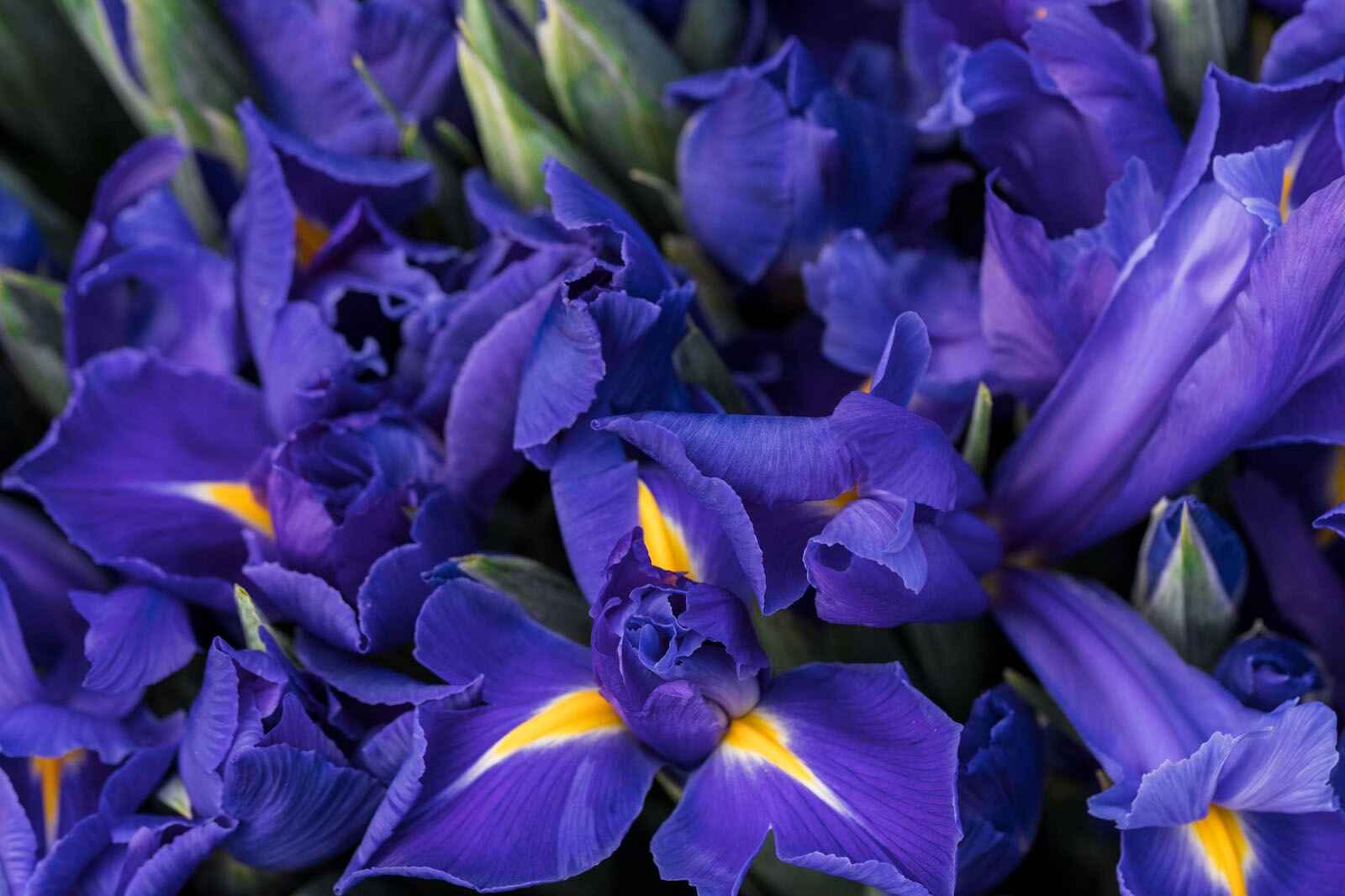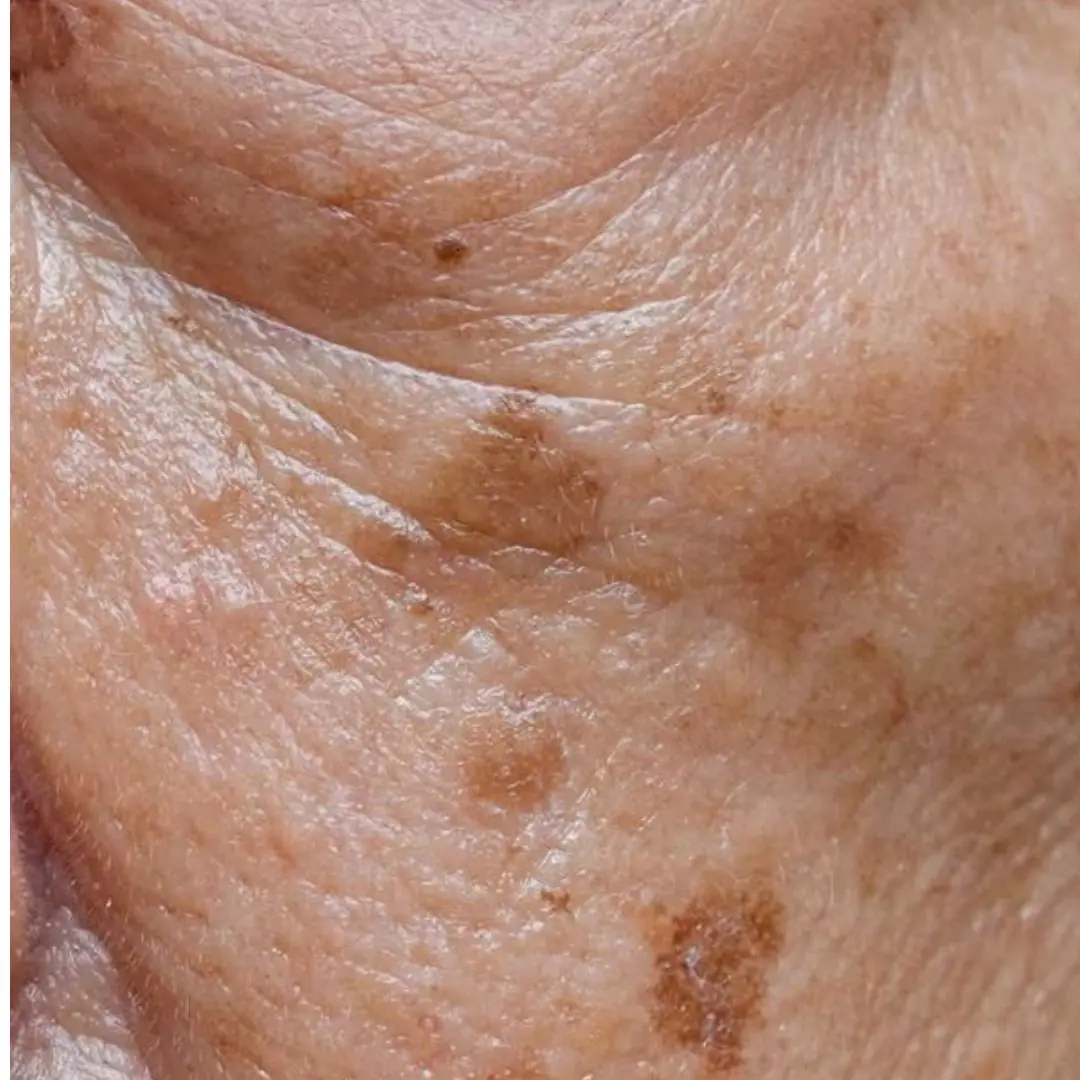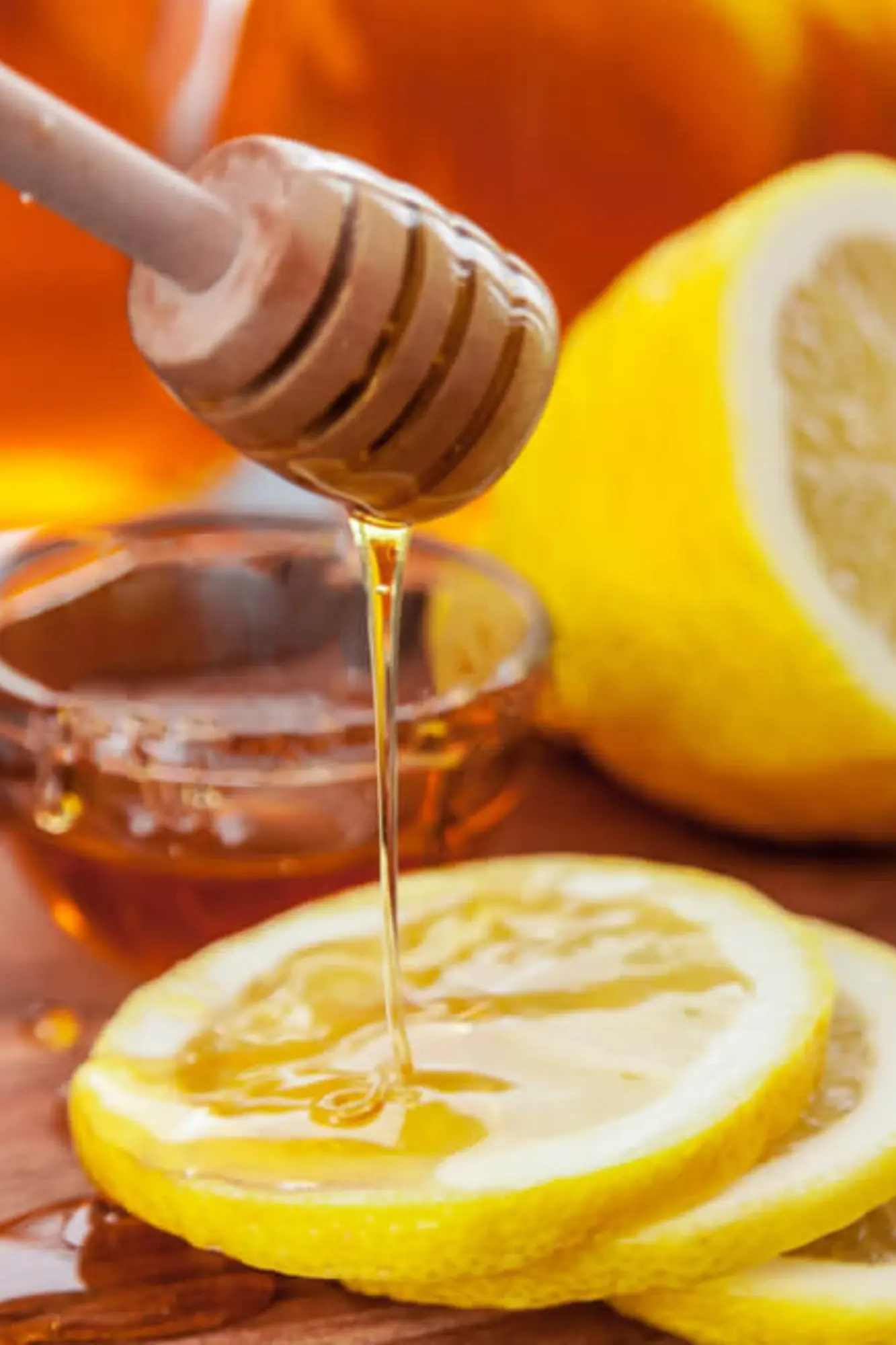
The Secret Strength of Iris Flowers: Timeless Elegance with Remarkable Healing Power

For centuries, the iris flower has captivated hearts around the world with its regal beauty, rich symbolism, and mysterious energy. Named after Iris, the Greek goddess who linked heaven and earth, the flower represents hope, faith, wisdom, and healing. Yet beyond its elegance lies a surprising truth — the iris isn’t just a visual marvel; it’s also a botanical treasure with remarkable medicinal properties.
From ancient herbal traditions to modern natural medicine, the Iris genus - particularly Iris germanica (Orris Root) and Iris florentina - has been valued for its healing, aromatic, and cosmetic uses. Today, researchers are uncovering how this exquisite flower offers real benefits for skin health, digestion, emotional balance, and more.
Let’s explore the hidden power of iris flowers - a blend of beauty, history, and healing that continues to inspire both science and the soul.
1. A Flower Rooted in History and Myth
The iris has been celebrated since ancient times, appearing in Greek, Egyptian, Japanese, and European cultures.
-
In Greek mythology, Iris was the messenger of the gods, her rainbow-hued cloak representing the connection between the heavens and humanity.
-
In ancient Egypt, iris flowers were placed on the graves of pharaohs as symbols of resurrection and eternal life.
-
In Japan, the iris (shōbu) was associated with purification and used in seasonal festivals to ward off evil spirits.
-
In France, the fleur-de-lis - modeled after the iris - became a royal emblem of purity, courage, and light.
Throughout history, the flower has symbolized not only beauty but also spiritual healing and transformation.
2. The Healing Essence of the Iris
The iris plant’s rhizome, commonly known as orris root, is where its healing magic lies. When dried and aged, it produces a delicate violet scent and is rich in isoflavones, triterpenes, and essential oils - compounds known for their anti-inflammatory, antioxidant, and antimicrobial properties.
Key Healing Properties:
-
Anti-inflammatory: Soothes swelling and irritation, especially for the skin and throat.
-
Antimicrobial: Helps fight bacteria and fungi naturally.
-
Antioxidant: Protects the body from free radicals and slows down aging.
-
Expectorant: Clears mucus and supports respiratory health.
-
Digestive tonic: Stimulates appetite and reduces bloating.
-
Calming effect: Eases tension and promotes emotional balance through aromatherapy.
3. Iris in Traditional Medicine
Across civilizations, the iris has been used as a natural remedy for multiple conditions.
Ancient Greek and Roman Medicine
Hippocrates and Dioscorides mentioned Iris florentina for treating respiratory ailments, skin rashes, and digestive discomfort. Ground orris root was infused into honey or wine to ease coughs, sore throats, and congestion.
In Ayurveda and Traditional Chinese Medicine (TCM)
The iris was valued for its cooling and detoxifying energy. Practitioners used it to:
-
Cleanse the liver and blood
-
Alleviate inflammation
-
Promote skin clarity and reduce blemishes
-
Balance emotional tension, particularly grief and anxiety
In Medieval Europe
Orris root powder became a common household remedy - used to treat bad breath, digestive problems, and fevers. It was also used in perfumes and as a teething powder for infants (though this is no longer recommended today).
4. Iris in Modern Beauty and Skincare
Today, the iris continues to shine - this time in the world of cosmetics and aromatherapy. Its soothing, hydrating, and protective qualities make it a key ingredient in luxury skincare and natural perfumes.
Skin Benefits:
1. Hydration boost: Iris root extract helps maintain skin’s moisture balance, making it ideal for dry or mature skin.
2. Anti-aging effects: Rich in antioxidants, it supports collagen production and elasticity.
3. Brightening action: The natural isoflavones reduce dullness and even out skin tone.
4. Soothing sensitivity: Calms irritation, redness, and inflammation caused by pollution or stress.
Many high-end brands like Chanel, Guerlain, and Weleda include iris extracts in serums, creams, and perfumes because of its delicate fragrance and regenerative power.
5. Emotional and Spiritual Healing
Beyond its physical uses, the iris flower carries profound energetic and emotional healing qualities.
-
Its vibrational energy is said to promote clarity, creativity, and inner peace.
-
The blue and violet hues resonate with the throat and crown chakras, enhancing communication, wisdom, and spiritual connection.
-
In flower essence therapy, iris essence is used to unblock creative flow, support emotional release, and awaken intuition.
In aromatherapy, orris root essential oil’s gentle floral scent helps calm the mind, relieve stress, and encourage restful sleep.
6. How to Use Iris at Home (Safely and Naturally)
While pure orris root oil can be expensive and potent, there are simple ways to incorporate iris into your wellness routine.
1. Iris Herbal Tea (for digestion and detox)
Ingredients:
-
1 teaspoon dried iris root
-
1 cup hot water
Instructions:
Steep for 5–7 minutes, strain, and drink warm.
Benefits: Helps ease bloating, improve digestion, and reduce inflammation.
(Note: Always consult a doctor before internal use, as orris root can be potent in high doses.)
2. Iris Infused Oil (for skin care)
Ingredients:
-
Dried iris root (powdered)
-
Carrier oil (jojoba or sweet almond oil)
Instructions:
1. Add iris powder to the oil in a glass jar.
2. Let it infuse for 2–3 weeks in a cool, dark place.
3. Strain and store. Use: Apply to dry or irritated skin for soothing and moisturizing benefits.
3. Aromatherapy with Orris Root
Add a few drops of orris essential oil to a diffuser or warm bath to relax your mind, balance emotions, and create a grounding atmosphere.
7. Scientific Research on Iris Compounds
Modern studies have validated several of the traditional uses of Iris germanica and Iris florentina.
-
Anti-cancer potential: Certain extracts show promising results in inhibiting cancer cell growth due to high isoflavone content.
-
Antimicrobial activity: Research confirms orris root’s ability to fight bacteria such as Staphylococcus aureus and E. coli.
-
Neuroprotective effects: Early findings suggest iris flavonoids may help protect neurons from oxidative stress, supporting brain health.
Though more research is needed, the evidence highlights the iris as a valuable medicinal plant with vast potential.
8. Precautions
While the iris is natural, it’s also potent.
-
Avoid consuming raw iris parts, as they can be mildly toxic.
-
Use properly dried and prepared orris root from trusted sources.
-
Pregnant and breastfeeding women should avoid internal use.
-
Always test for skin sensitivity before applying new botanical extracts.
9. A Flower of Healing, Grace, and Legacy
The iris flower is more than a symbol of beauty - it’s a living embodiment of strength, wisdom, and healing through transformation.
From ancient temples to modern laboratories, its power continues to bridge nature and medicine, body and spirit.
Whether admired in a garden, worn as perfume, or used as a healing remedy, the iris reminds us that true beauty heals from within - and that even the most delicate petals can hold the power to restore balance and inspire the soul.
Final Thought
In every petal of the iris lies a lesson from nature: resilience wrapped in elegance, strength hidden in softness.
By rediscovering the ancient healing power of this timeless flower, we are reminded that wellness is not only about treating illness - it’s about living beautifully, inside and out

News in the same category


Butter Steak Bites with Mashed Potatoes & Glazed Carrots – A Comfort Plate With Serious Flavor

What causes black thorn disease?

The #1 Drink to Reverse High Uric Acid and Gout — Backed by Science

If You Wake Up With These 4 Morning Symptoms, Sorry — Your Kid.neys May Be in Trouble

Drinking Coffee at the Wrong Time May Harm Your Heart:

Your feet can reveal important warning signs about circulation and nerve health

Are kidney cysts really benign? Experts warn of signs that should never be ignored

Typical signs of uterine fibroids

The More You Eat This Vegetable, the Cleaner Your Arteries Become: A Stroke-Prevention Secret Many People Overlook!

Age Spots and Selenium: How This Powerful Mineral Can Help Fight Sun Damage Naturally

A 12-year-old boy loses 12 teeth at once due to a common habit among children

Warning: A Common Daily Habit May Be “Inviting” Liver Can.cer — Many People Know It, Yet Still Do It

6 foods that clean the intestines naturally when eaten on an empty stomach

Poucas pessoas reconhecem os sinais de alerta de problemas de circulação que podem surgir nos pés e nas pernas durante a noite

Don’t Ignore These Silent Signs of Oral Cancer

Pain on the left side of your body: What could it mean?

Your feet can reveal important signs about your circulation and metabolic health

These are the consequences of eating....

5 amazing benefits of drinking warm water with honey
News Post

DANGEROUS COMPLICATIONS OF PULPITIS

Butter Steak Bites with Mashed Potatoes & Glazed Carrots – A Comfort Plate With Serious Flavor

What causes black thorn disease?

Baked Sweet Potatoes with Garlic Butter.

The #1 Drink to Reverse High Uric Acid and Gout — Backed by Science

If You Wake Up With These 4 Morning Symptoms, Sorry — Your Kid.neys May Be in Trouble

Drinking Coffee at the Wrong Time May Harm Your Heart:

Cardiologist reveals 3 drinks that help control blo.od pressure

A single ingredient to combat bone pain, diabetes, anxiety, depression, and constipation

Okra is great for your health, but not everyone reacts to it the same way

So this is why our electricity bills have been so high — we’ve been wasting power for ages without knowing!

Your feet can reveal important warning signs about circulation and nerve health

Whitmore's 'flesh-eating bac.teria' cases increase: Who is vulnerable?

Are kidney cysts really benign? Experts warn of signs that should never be ignored

Typical signs of uterine fibroids

The More You Eat This Vegetable, the Cleaner Your Arteries Become: A Stroke-Prevention Secret Many People Overlook!

Age Spots and Selenium: How This Powerful Mineral Can Help Fight Sun Damage Naturally

A 12-year-old boy loses 12 teeth at once due to a common habit among children

Warning: A Common Daily Habit May Be “Inviting” Liver Can.cer — Many People Know It, Yet Still Do It
